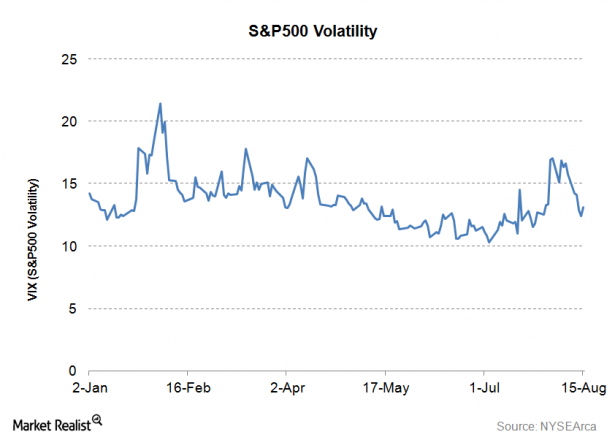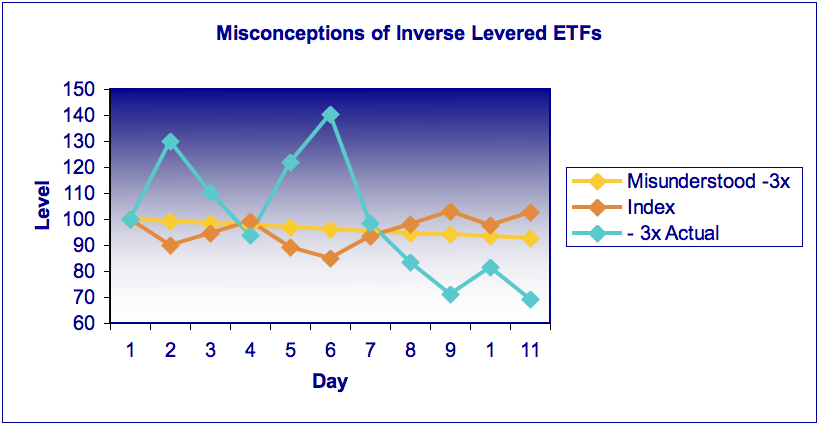Leveraged ETFs Are They Right For You
Post on: 24 Июнь, 2015 No Comment

The appeal of exchange-traded funds (ETFs) is simple: They mix the diversification benefits of mutual funds with the ability to trade on an intraday basis. These investment products have been grabbed up eagerly by investors and there is now a myriad of choices in the ETF arena, from ETFs that track large cap U.S. stocks to those that track individual sectors. There are now thousands of ETFs to choose from and more are being added on a regular basis.
Another relatively new category is leveraged ETFs. The purpose of a leveraged ETF is to increase the exposure and impact from the underlying index or investments in the ETF. For example, the leveraged ETF may attempt to double the return of an index on a daily basis. (To learn more about indexes, see The ABCs Of Stock Indexes and Index Investing .)
Leveraged ETFs provide another tool for investors to access leverage in the financial markets. And because purchasing an ETF is as simple as issuing a buy order through your trading account, it is a much simpler process for most than using options, futures and margin. In this article, we’ll show you some key considerations to watch out for when purchasing leveraged ETFs.
ProShares Leveraged ETFs
In June 2006, ProShares introduced the first wave of leveraged ETFs, referred to by the company as Ultra ProShares. The ultra ETFs are designed to double the daily performance of the underlying indexes they tracks. For example, the ProShares Ultra Dow 30 ETF (DDM) is structured to gain 2% when the Dow Jones Industrial Average gains 1%. Consequently, DDM will lose 2% if the Dow loses 1%.
Since the initial launch of four ultra ETFs in June 2006, ProShares continues to roll out more leveraged options for investors; as of May 2009, the total stood at 30. The ultra ETFs are broken into three categories: market cap. style and sector. The market cap section includes ETFs that track major indexes, such as the Dow and S&P 500. The style ETFs concentrate on the value and growth areas of the Russell 1000, Russell 2000 and Russell Mid-Cap indexes. There are also ultra sector ETFs, which offer investors leverage in 11 different sectors such as oil and gas and semiconductors, and ultra currency ETFs, which track the euro and Japanese yen.
To generate the magnified returns, ProShares implements a number of investment strategies. According to its prospectus, it uses equities and other financial products to capture the leveraged return. One of the vehicle classes used to help magnify the results is derivatives such as options or futures contacts.
Other fund companies began providing leveraged ETFs shortly after proshares, including Rydex Investments.
Are They Accurate?
In theory, a leveraged ETF that returns twice that of the S&P 500 will have generated a return of more than 650% from 1990 through May 2006. Unfortunately, there is no way to track the exact returns because these ETFs have been around for less than a year. However, a study of the performance since the first batch of ProShares ETFs hit the market does make for an interesting discussion.
On a daily basis, the return of the ultra ETFs has been fairly accurate, but over the long term there are some issues. Remember that the goal of the ultra ETFs is to return twice the underlying index on a daily basis. Therefore, each day ProShares strives to achieve that goal, but less consideration is placed on the product’s long-term performance accuracy.
Assume the Nasdaq falls 2% in one day and rebounds with a 1% gain the following session. The index will have a two-day loss of 1.02%. An ETF that gives investors double the index will result in a 2.08% loss after two days. If the ETF returned exactly twice the index, the return should be -2.04%. Granted the difference is small in the example, but it can increase drastically over time with compounding. If a stock falls 2%, it must rally 2.04% to get back to even. Over time, this takes a toll on performance.
In the ProShares prospectus for the leveraged ETFs, it clearly states that investors should not expect the long-term performance to be double the underlying index. But it does not make this point very clear when advertising the leveraged ETFs, and most average investors will buy under false pretenses. As a result, it is important to know, before buying an ultra ETF, that the goal is double the daily return and not the long-term return.
The Time for Leveraged ETFs
Leveraged ETFs are typically best used by investors who are using a short-term trading strategy. Traders who are seeking to capitalize on daily movements — either in the market or in a specific sector — are able to use the ultra ETFs to gain leverage. Because the ultra ETFs give short-term traders the leverage needed on a daily basis without the negative compounding error, most will get in and out within a day.
The ultra ETFs can also be helpful to investors who would like to gain overexposure to a specific sector or index, but do not have the required capital. For example, suppose that an investor is 95% invested in a diversified allocation. but is lacking exposure to the utility sector. The investor’s goal is to invest 10% of his or her portfolio into utilities; however, with only 5% in cash it might appear impossible. That is until ProShares introduced the ultra sector ETFs in February 2007. The investor can use the 5% cash available to purchase the ProShares Ultra Utilities ETF (UPW) and, in reality, give the portfolio a 10% allocation to the sector. (To learn more about asset allocation, see Five Things To Know About Asset Allocation . Choose Your Own Asset Allocation Adventure and Asset Allocation Strategies .)

Sector Allocations
A strategy that has become more prevalent in the investment world is the top-down approach. which begins with the overall market and works its way down to sectors and eventually individual stocks. One option is to stop when the strategy gets to the top-rated sectors and search for ETFs to gain exposure to the entire area. This will often result in a similar, if not higher, reward-to-risk opportunity because the individual stock risk is eliminated. (Find out more about this approach in A Top-Down Approach To Investing and Where Top Down Meets Bottoms Up .)
A new twist on the strategy for aggressive investors could include using the ultra ETFs in place of a typical sector ETF. Investors who believe strongly in their strategy and are willing to leverage their assets can increase the potential return by using the ultra sector ETFs. Keep in mind that when the strategy is correct, the gains will be higher, but in times when the wrong ETFs are selected, the losses will be magnified. This is the double-edged sword of leveraged investments.
Wrapping It Up
To recap, the advantages of the leveraged ETFs are:
- They offer an easy and inexpensive way to use leverage without using options or margin.
- They are available in retirement accounts.
- They are a great trading tool for short-term traders.
The negatives associated with leveraged ETFs include:
- The impact of negative compounding can result in long-term inaccuracy.
- Many leveraged ETFs trade only a few thousands shares per day, leading to low liquidity.
- Leveraged ETFs are a high-risk investment that could be dangerous to the uneducated investor
Overall, leveraged ETFs are a useful new vehicle for the right strategy and for an investor who performs his or her due diligence.














